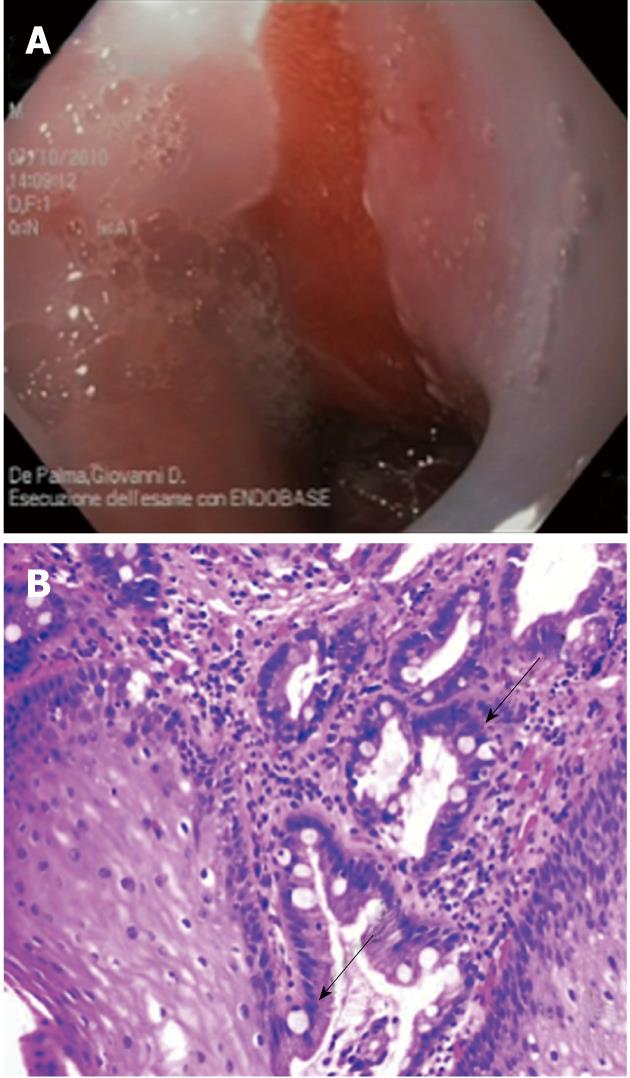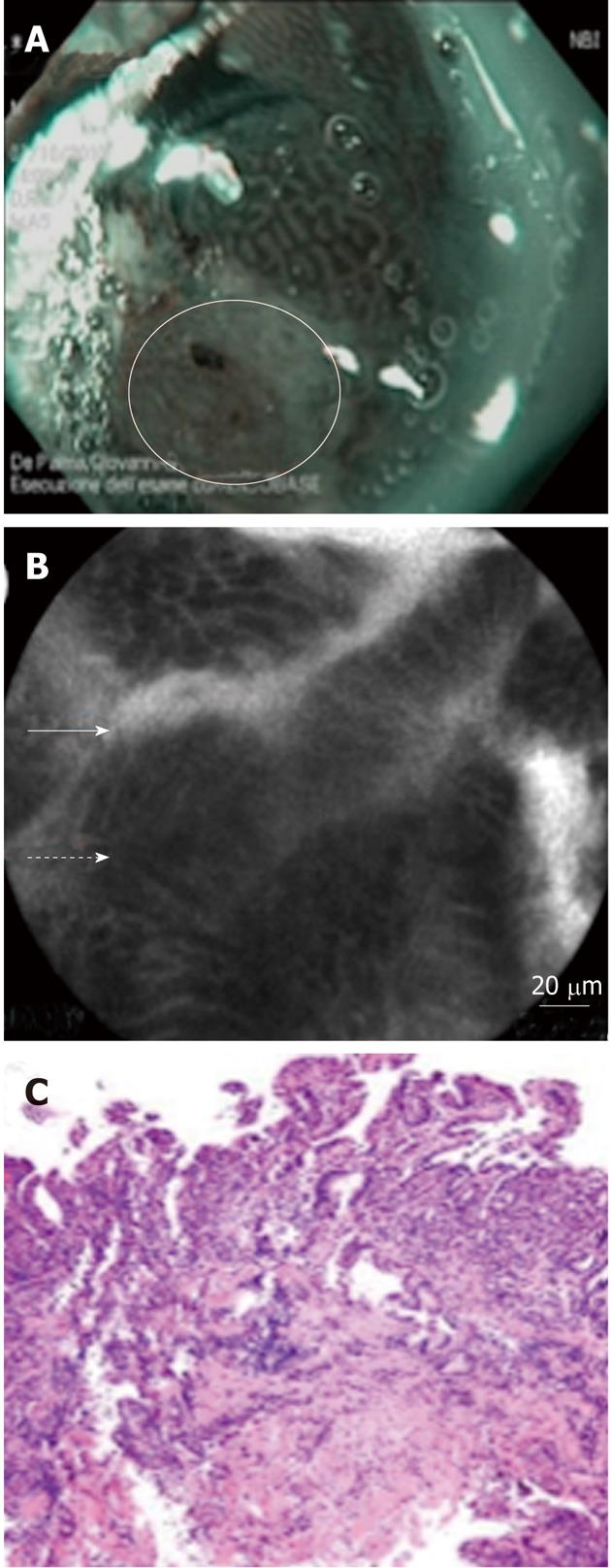Copyright
©2012 Baishideng Publishing Group Co.
World J Gastroenterol. Nov 21, 2012; 18(43): 6216-6225
Published online Nov 21, 2012. doi: 10.3748/wjg.v18.i43.6216
Published online Nov 21, 2012. doi: 10.3748/wjg.v18.i43.6216
Figure 1 Endoscopic and histologic images of Barrett’s esophagus.
A: Endoscopic view of salmon-colored mucosa above the gastro-esophageal junction; B: Intestinal metaplasia with goblet cells (arrows) was found in biopsy specimens at histology.
Figure 2 White-light and enhanced endoscopic images of non-dysplastic Barrett’s esophagus.
A: White-light of Barrett’s esophagus; B: Narrow-band imaging endoscopic of Barrett’s esophagus; C: Probe-based confocal laser endomicroscopy (pCLE) images of Barrett’s esophagus. p-CLE image shows uniform villiform architecture, columnar cells (solid arrow) and dark goblet cells (dash arrow) predictive of non-dysplastic Barrett’s esophagus.
Figure 3 Enhanced narrow-band imaging and probe-based confocal laser endomicroscopy images of dysplastic Barrett’s esophagus.
A: Narrow-band imaging images shows distorted pits with irregular microvasculature (white circle); B: The corresponding probe-based confocal laser endomicroscopy image shows disorganized, distorted villiform structure and crypts, dark columnar cells (dash arrow) and dilated irregular vessels (solid arrow); C: High-grade dysplasia was found at histology in biopsy specimens performed at this level.
- Citation: Palma GDD. Management strategies of Barrett's esophagus. World J Gastroenterol 2012; 18(43): 6216-6225
- URL: https://www.wjgnet.com/1007-9327/full/v18/i43/6216.htm
- DOI: https://dx.doi.org/10.3748/wjg.v18.i43.6216











